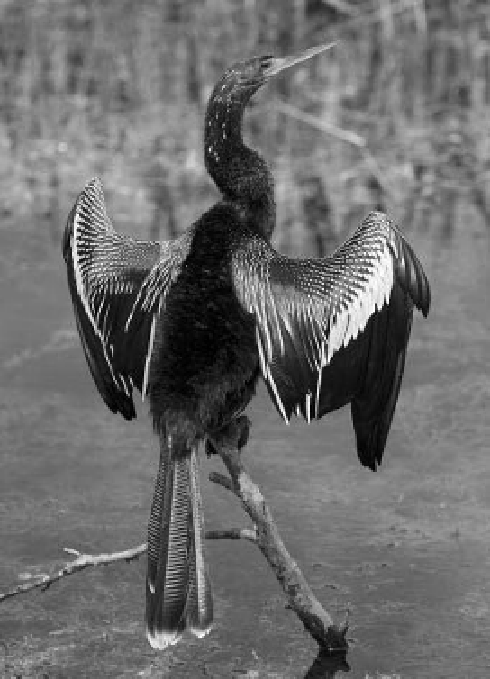Geoscience Reference
In-Depth Information
Figure 7-32.
Snares crested penguin (
Eudyptes
robustus
) is endemic to the Snares Island group, which
is part of the New Zealand Subantarctic World Heritage
Site (TerraNature 2007). Seen here at Station Cove,
North East Island, Snares Islands. It spends much of
the year at sea and feeds mainly on krill, squid, and
i sh. Modii ed from original photograph by T. Mattern;
obtained from Wikimedia Commons
Figure 7-33.
Anhinga (
Anhinga anhinga
) dries its
wings at Loxahatchee National Wildlife Refuge, Florida,
United States. Modii ed from original photograph by
D. Schwen; obtained from Wikimedia Commons
<
http://commons.wikimedia.org/
>
.
<
http://commons.
wikimedia.org/
>
.
the i sh. Cormorants dive into water and swim
using their wings and feet. They catch i sh with
their hooked beaks and can reach depths of
40 m (Dugan 2005). People have long used cor-
morants as traditional i shing aids, and cormo-
rant i shing is still practiced in parts of Japan,
China, and Macedonia. Like the anhinga, cormo-
rant feathers are wettable, which allows them
to swim deeply, so they must dry their feathers
frequently.
Many raptors exploit the aquatic environ-
ment to catch i sh, amphibians, rodents, snakes,
crayi sh, and other small animals. Several raptors
are adapted for this lifestyle, including the
northern harrier (
Circus cyaneus
), osprey
(
Pandion haliaetus
), red-shouldered hawk
(
Buteo lineatus
), and African i sh eagle (see Fig.
Figure 7-34.
American white pelicans (
Pelecanus
erythrorhynchos
) wait quietly for i sh to wander by in
a lagoon next to the Missouri River in western North
Dakota, United States. Photo by J.S. Aber.







